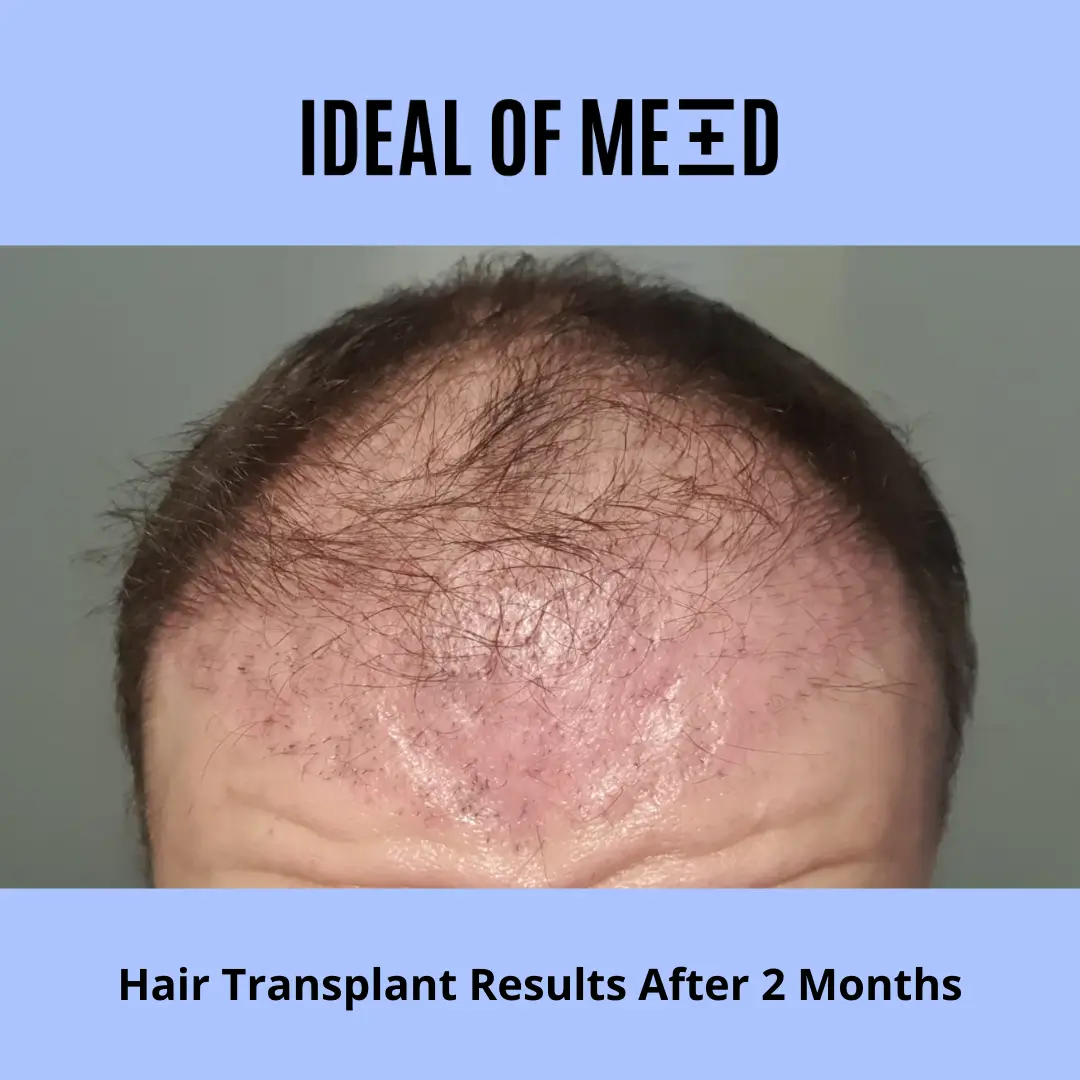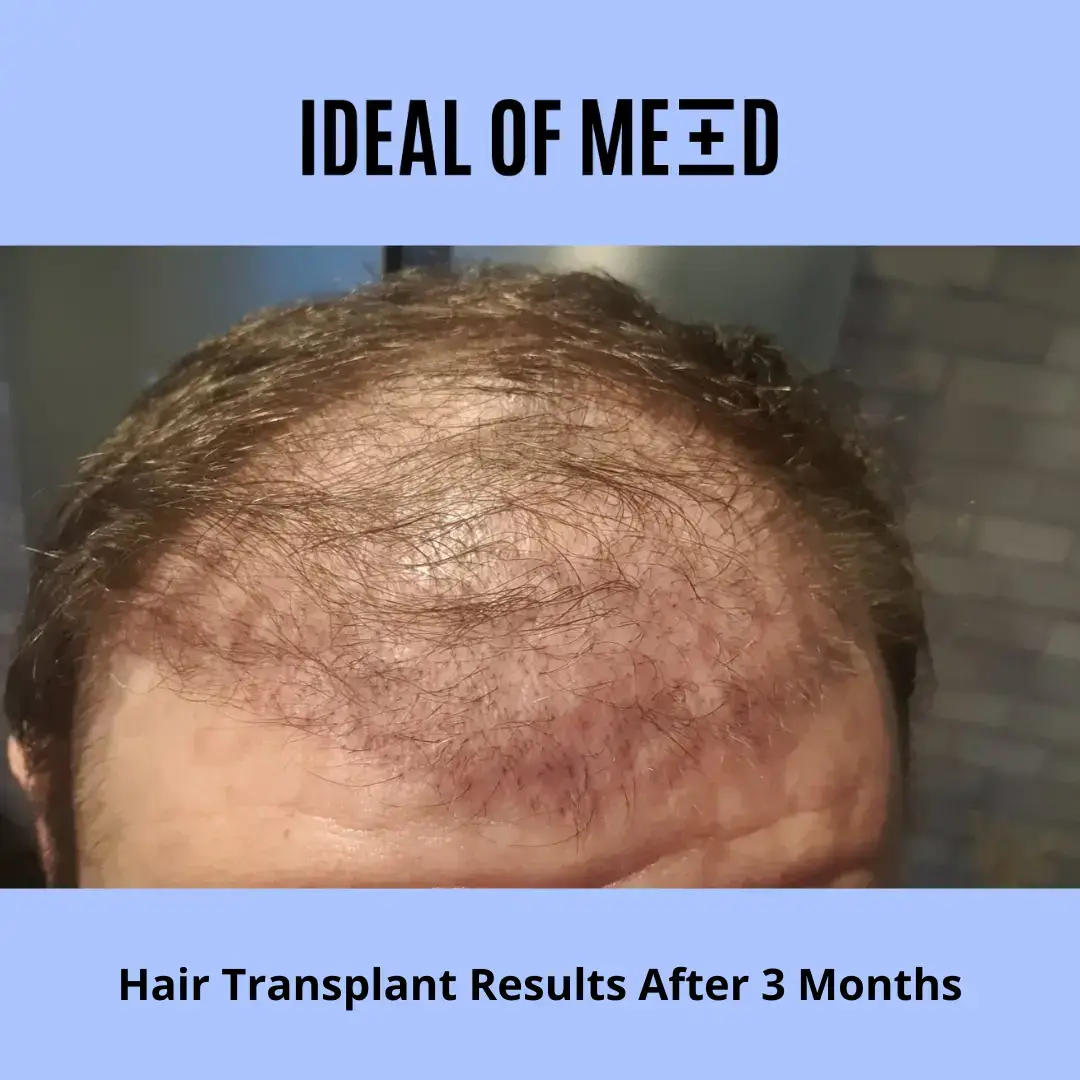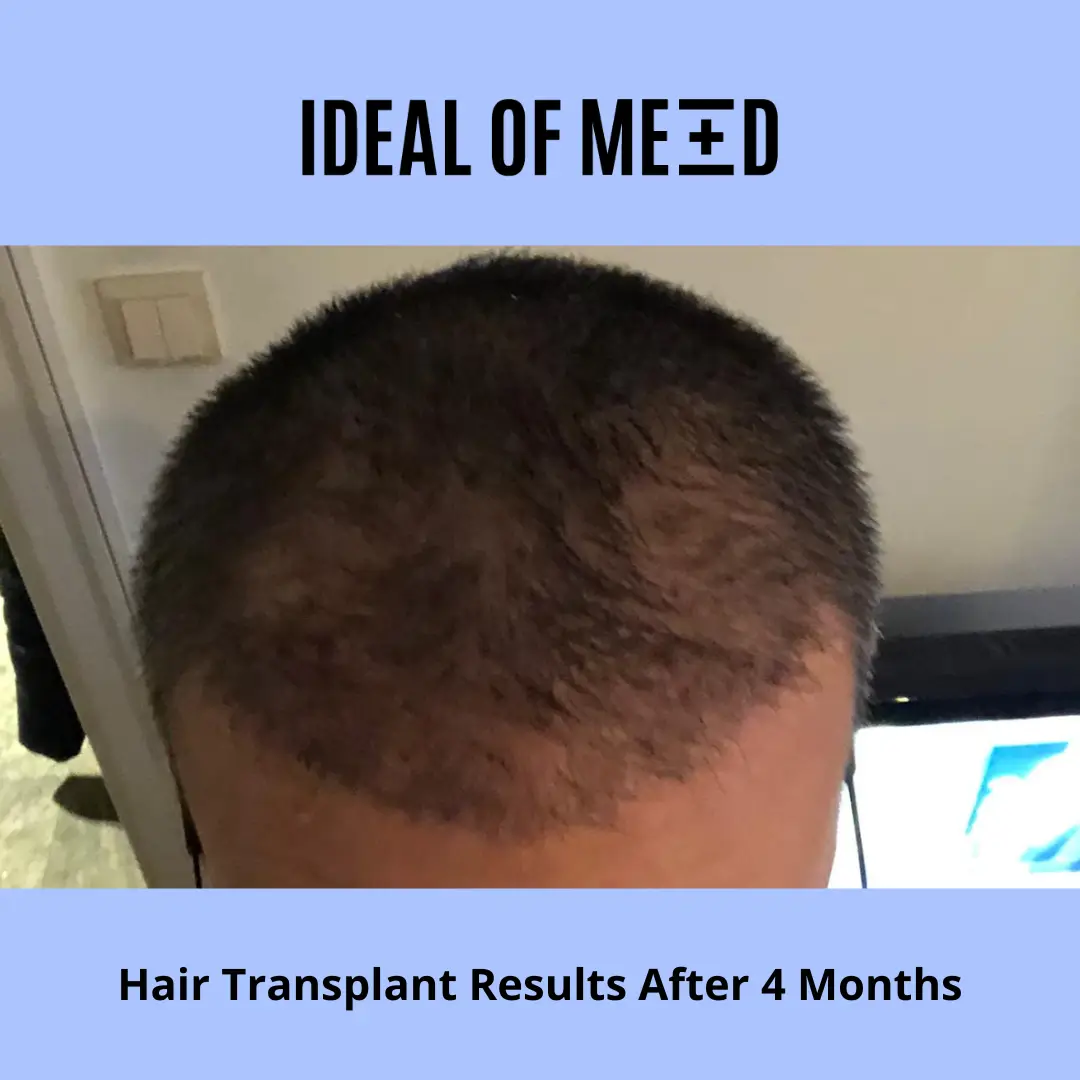Hair Transplant Results Month by Month
- Methods
- Process
- Recovery Time
- Pros and Cons
- Aftercare
The road to recovery following a hair transplant is long. In the months that follow your hair transplant procedure, you will notice both subtle and noticeable changes. The full head of hair you’ve been dreaming of will eventually become a reality thanks to the various advancements that each month will offer.
You will learn everything you need to know about your rehabilitation’s month-by-month progress here.
Table of Contents
Month-by-Month Pictures





After 1 Month
You can anticipate that your freshly implanted hair will begin to fall out one month following your FUE hair transplant. After 1 month you can also experience a small amount of moderate redness where your newly implanted hairs were. By this time, the remainder of your scalp ought to be completely healed.
The first three months of your hair transplant recuperation are the most difficult.
Your hair will naturally start to fall out following a transplant. Our hair grows in cycles that alternate. The hair shafts shed after the transplantation process and go into dormancy (also known as “shock loss”). The follicles that were implanted are not lost as a result of this. After the latent stage is over, they will begin to produce again since they are securely buried in the scalp.
Since there is no shock loss in the donor location, the hair starts to grow right away following the hair transplant. This indicates that new growth will cover the donor area, which had to be shaven as part of the treatment for easy access, in around one week.
What Progress Results to Expect
Scabbing ought to cease entirely with your hair transplant results after 1 month, hairs will follicle shed and fall off. This actually indicates that you are healing and that your hair transplant procedure has thus far been effective. The shock loss following a hair transplant stage of the healing process is referred to as this. The follicles that were implanted are not lost as a result of this. After the latent stage is over, they will begin to produce again since they are securely buried in the scalp.
Safety Measures to Take Into Account
There is always a chance that the implanted graft will become dislodged if the necessary post-operative procedures are not strictly followed. For at least three weeks, you should refrain from swimming and working out in order to prevent these kinds of problems.
It is advised to abstain from using chemicals like caffeine, alcohol, and cigarettes for a while because they can all alter blood circulation and even cause blood to thin.
Post-Surgery care
You must take careful care of your scalp after having a hair transplant. As the transplanted grafts are still encrusting into the scalp within the first two weeks following surgery, one of the most crucial things you should refrain from doing is rubbing your scalp or hair. For the first few days, you might need to sleep with your head lifted with a neck cushion to relieve any strain on your head.
You will also be given cleansing solutions like medical shampoos as well as drugs like antibiotics and painkillers. It is crucial that you adhere to your doctor’s recommendations; otherwise, unfavourable consequences could arise, jeopardising the operation’s outcome.
After 2 Months
Hair transplant results after 2 months, you should not be in discomfort or uncomfortable, and you should be washing your hair regularly. The redness and inflammation should be long gone. You can perform your usual form of exercise.
It should be possible for you to sleep comfortably, for the best hair transplant results month by month.
Shock hair loss progressively subsides and new hair growth is visible throughout much of the second month. Hair growth can occur at an erratic or uneven rate. Usually, hair that hasn’t lost any hair throughout the shock loss stage appears weaker. After the hair has shed, the hair follicles go into what is known as the telogen resting period. This process takes two and a half months.
What Progress Results to Expect
Please be aware that not every person’s hair sheds and falls out at the same time. Since this is a process that takes time, your recipient region may appear patchy for considerable periods of time.
Safety Measures to Take Into Account
Hair transplant results month by month shows that your transplanted hairs start to “germinate” beneath the skin starting about 2-3 months after surgery. Occasionally, ingrown hairs may appear. They appear in the grafted region as red, elevated bumps that resemble pimples. Ingrown hairs will go away on their own schedule.
Post-Surgery care
For the best hair transplant results month by month, you need to see the doctor frequently so that any problems may be taken care of right soon. The first two months of recovery following a hair transplant procedure have a bearing on how well it will work out. If there is a problem or a major negative result during these two months, a hair transplant is considered unsuccessful. Consider taking the following procedures to guarantee the best results.
- Don’t spend too much time in the sun.
- Avoid smoking
- Steer clear of strenuous exercise.
- Avoid swimming to protect your scalp from salt and chlorine.
- Try not to massage or caress your scalp.
After 3 Months
Because of continuing aftercare for the best hair transplant results month by month, you may experience fewer side effects and benefit from stronger hair regrowth once you reach the anagen stage of the hair transplant cycle.
Your recuperation from your hair transplant has advanced significantly. Hair transplant results after 3 months , you’ll likely start to notice the first signs of hair growth in the recipient area, about 10 to 20%.
What Progress Results to Expect
Depending on your natural hair cycle, your hair will reach the anagen phase of the hair development cycle 3 months after your hair transplant procedure. If, following three months, the recipient area hasn’t seen any additional hair growth, you might just need to wait a few more weeks. This is due to hair growth that varies for each individual.
Safety Measures to Take Into Account
For three months following a hair transplant, avoid using PRP, mesotherapy, growth factors, medicinal therapies, or hair loss spray.
Post-Surgery care
Thankfully, the majority of the adverse effects vanish three months following your hair restoration surgery. However, because new hair growth begins at this time, It’s plausible that you could encounter a few minor adverse effects. There may be little ingrown hair signs that resemble pimples in the recipient zone during month three, when the hair growth cycle starts. These pimples are a sign that new hair follicles are advancing toward the epidermis and may soon break the skin’s surface as they thicken.
3 months after undergoing a hair transplant procedure, it’s normal to still feel some numbness in the scalp, despite the fact that you anticipated that you’ll have managed to regain sensitivity around then. This occurs as a result of the hair transplant surgery damaging the scalp’s nerves, which results in the development of small sores there.
You can start to experience itching or tingling as the nerves in your scalp start to renew and become more sensitive. The recipient zone develops patchiness because the individual hair shafts begin to grow at different times, resulting in hair that is shorter in some spots and longer in others.
Pictures of Hair Transplant Results After 3 Months
After 4 Months
Hair transplant results month by month you will discover that after 4 months new hair will start to grow. (also called the slow-growth stage). You can finally start to approach your treatment with excitement at this point.
What Progress Results to Expect
After 4 months of hair transplantation, there may be a slight hair growth, and any side effects, including edema, redness, irritation, and itching, go away. Hair loss is a common occurrence and a natural component of the hair growth cycle. Rarely, there can be no hair loss, which is a positive indicator. During the phases after your hair transplant, patience is essential. You cannot expect to start seeing results right away because the hair restoration process takes a long time.
Safety Measures to Take Into Account
The only thing left to do at this point is wait patiently as the hair grows. You can start planning how you want to style your hair.
After 5 Months
For both men and women who have had men’s and women’s hair transplants, this is a very exciting time.
What Progress Results to Expect
During months 4-6, you’ll be able to clearly see the transplanted hairs begin to come back. Up until the fifth month, 60% of the hair in the farmed region grows. The hair follicles, which are initially little and curled, take shape and grow stronger over time. The hair grows about 1 centimetre every month during this procedure.
Safety Measures to Take Into Account
In the first four months, hair loss may not occur for some people. Although it’s unlikely, the shocking loss could occur in the 5th month. Due to this loss, you might see the development of acne on your scalp. You should take every precaution to shield your skin from the elements.
It’s hazardous to shave your head with a shaver or get a haircut with a trimmer.
Till six months following a hair transplant for men, and a female hair transplantation, stay away from hair, saunas, high heat, and extreme cold.
Taking hair supplements and getting PRP in the fifth month are both options.
The highest amount of time needed to get a 100% result is roughly one year.
After 6 Months
Hair transplant results month by month, you will notice the rate of hair growth is at its fastest after six months. Each day, hair strands begin to thicken and strengthen. It covers up to 80% of the area.
What Progress Results to Expect
After six months, you will see a rise in the volume and darkness of the hair as it starts to resemble your real hair more realistically. This time frame, called the emergent period, is when you will see around 50% of the final hair transplant results. It’s fantastic to know that your hair will continue to thicken and grow longer for the next six months, even though for some people this can be a fairly exciting time.
Safety Measures to Take Into Account
Despite the fact that everything appears to be returning to normal, you must take extra care not to subject your hair to extremely hot or cold temperatures.
After 1 Year
Some people may not see their entire hair transplant results until 1 year, or about 18 months following surgery, although for the majority, 1 year is enough time for the hair to grow and thicken to its full potential.
What Progress Results to Expect
Twelve months after having hair transplants, the majority of people have fully developed hair. This indicates that the hair has grown thicker and is now growing at its maximum rate. The thicker, longer hair shafts conceal your scalp’s previously scant or balding spots.
Safety Measures to Take Into Account
We advise that you maintain the same level of care for the freshly transplanted hair as you did during the healing process in order to ensure that you maintain the benefits of your hair transplant results month by month achievement.
Frequently Asked Questions
In 9 to 12 months following a hair transplant, 100% of the effects can be seen.
The hair shafts shed after the transplantation process and go into dormancy (also known as “shock loss”), at one month after a hair transplant. Please refer to the section in this article named “Hair Transplant Results After 1 Month”.
For three months following a hair transplant, avoid using PRP, mesotherapy, growth factors, medicinal therapies, or hair loss spray. Please refer to the Safety Measures to Take Into Account After 3 Months”in this article.
Swimming, drinking alcohol, smoking, engaging in high-impact exercise, and other activities should be avoided during these few days as they pose a risk following a hair transplant.

Wendy
Last updated by Wendy on November 10, 2022. Content medically reviewed by D. Demirel, MD.
- Barrera, A., 1997. Micrograft and minigraft megasession hair transplantation: review of 100 consecutive cases. Aesthetic Surgery Journal, 17(3), pp.165-169.
- Hwang, S., Kim, J.C., Ryu, H.S., Cha, Y.C., Lee, S.J. and Na, G.Y., 2002. Does the recipient site influence the hair growth characteristics in hair transplantation?. Dermatologic surgery, 28(9), pp.795-799.
- Audickaite, A., Alam, M. and Jimenez, F., 2020. Eyebrow hair transplantation in frontal fibrosing alopecia: pitfalls of short-and long-term results. Dermatologic Surgery, 46(7), pp.922-925.
